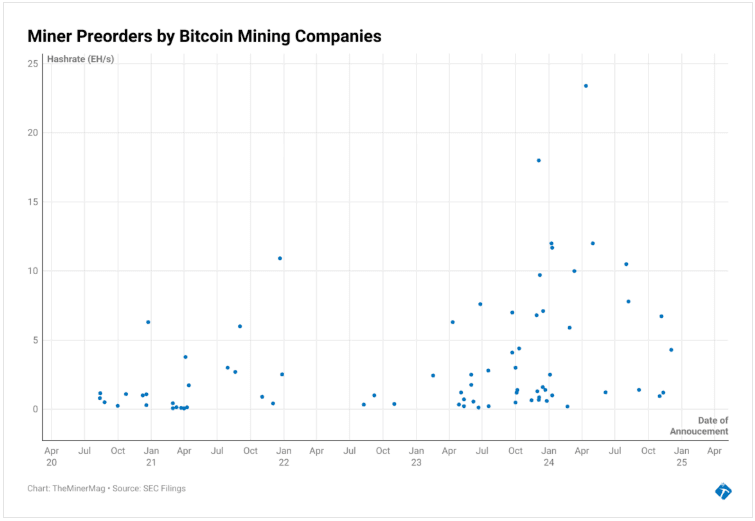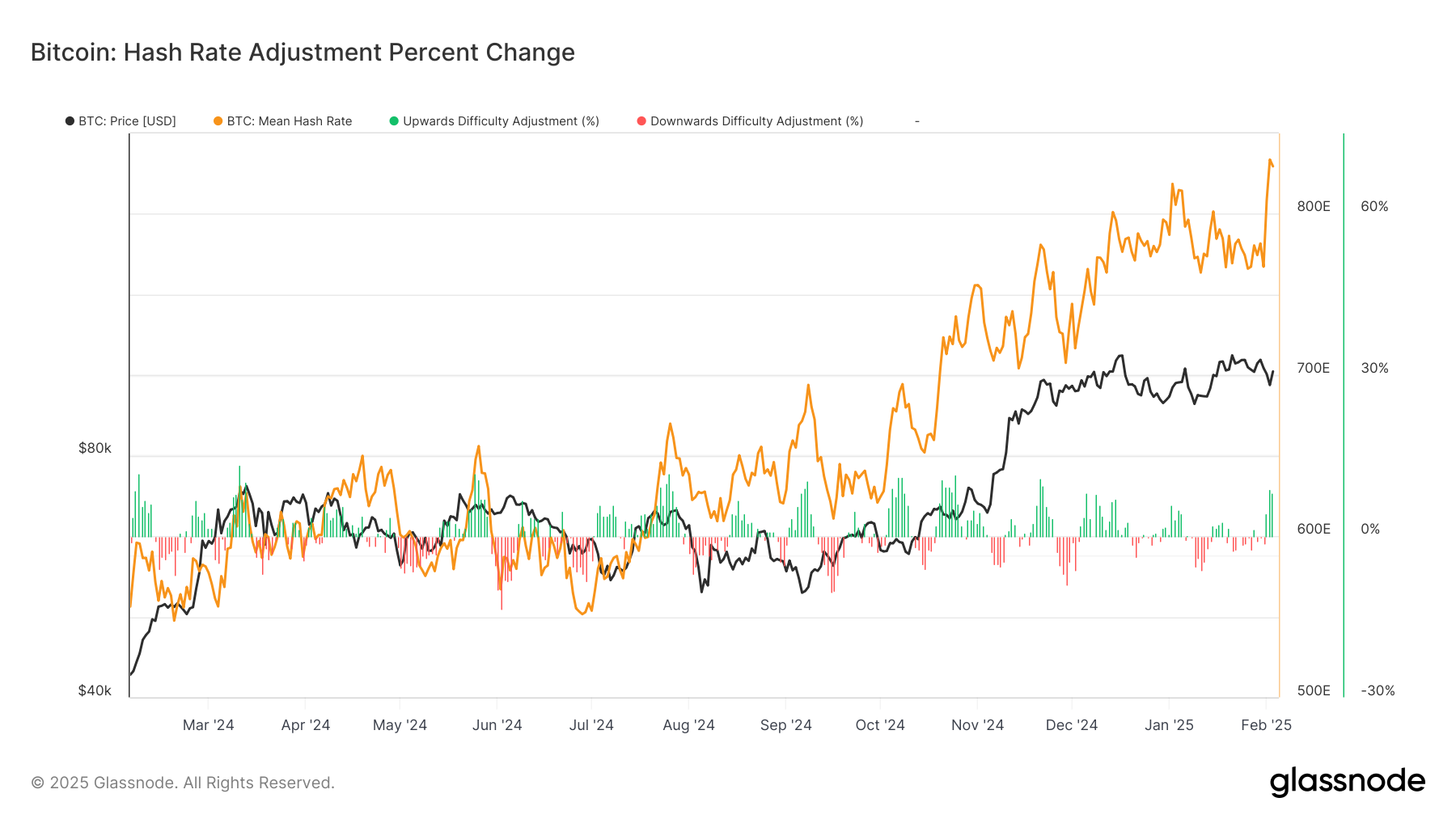Bitcoin Hashrate Reaches New Heights

Bitcoin (BTC) has achieved a remarkable milestone as its hashrate surged to an all-time high, with the seven-day moving average climbing to an impressive 833 exahashes per second (EH/s), according to the latest data from Glassnode. This marks a significant 9% increase from the previous level of 767 EH/s observed just days ago.
As reported by The Miner Mag, there has been a noticeable decline in pre-orders for mining hardware following a pre-halving surge. Many mining enterprises had proactively stocked up on equipment in anticipation of the upcoming halving event, ensuring they could maintain a competitive edge in the evolving market. However, analysts are now predicting a potential slowdown in the growth of hashrate expansion.
The hashrate serves as a vital metric for measuring the computational power dedicated to securing the Bitcoin network through mining activities. A higher hashrate correlates with enhanced network security, which is crucial for the integrity of the blockchain.
Over the past 18 months, the Bitcoin network has experienced a substantial increase in hashrate, largely driven by a wave of institutional investments in mining infrastructure. This surge in hashrate comes in anticipation of Bitcoin’s upcoming halving event scheduled for April 2024, which occurs roughly every four years and results in a 50% reduction in block rewards. Since the last halving, the hashrate has surged by more than 40%, indicating a continued expansion of mining operations.
Despite this impressive growth in hashrate, The Miner Mag highlights that mining profitability has remained relatively stagnant in recent months. One of the primary factors contributing to this trend is the historically low transaction fees on the Bitcoin network, which have significantly diminished miner earnings. Currently, a high-priority transaction in the Bitcoin mempool costs a mere 5 sat/vB (approximately $0.69)—one of the lowest fee levels seen in recent years. With fewer transactions generating substantial fees, miners are facing challenges in offsetting their operational costs.
The long-term economic model of the Bitcoin network is designed to gradually transition from block subsidies to transaction fees as the main source of miner revenue. However, the current market dynamics present significant hurdles to this model.
Looking ahead, the next difficulty adjustment is set to occur in four days and is anticipated to increase by over 6%, potentially reaching an all-time high. This adjustment may further intensify the pressures faced by miners in an already challenging landscape.
Disclaimer: Portions of this article were generated with the assistance of AI tools and have been meticulously reviewed by our editorial team to ensure accuracy and compliance with our editorial standards. For further information, please refer to CoinDesk’s comprehensive AI Policy.







